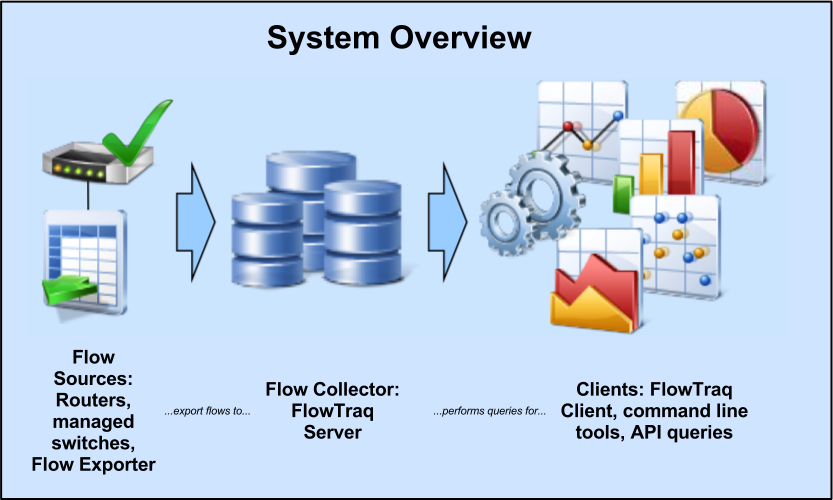A FlowTraq installation consists of an instance of FlowTraq Server and one or more instances of FlowTraq Client. Because FlowTraq is a networked application, you can access the system from anywhere on your network.
You can deploy FlowTraq Server on a dedicated server, on your own workstation, in a virtual machine, or in the cloud. In each case, FlowTraq will perform well as long as the server's hardware is sufficient to keep up with the network. (See Section 2.1, “System Requirements” for more information on hardware requirements.)
FlowTraq Server collects and stores the flows from your switches, routers, and other networked devices, and accepts connections from FlowTraq Client and the command line interface (CLI) tools. The client software and the CLI tools are used to analyze the collected flow records.
Flows are exported by switches, routers, and other networked devices, the capabilities of which vary by manufacturer. Check with your network equipment vendors to see whether your devices are capable of exporting any of the FlowTraq compatible flow formats.
FlowTraq Client and the CLI tools use TCP/IP (TCP port 9640) to communicate with FlowTraq Server, and both the Client and the CLI tools are relatively lightweight. FlowTraq Client offers a user-configurable dashboard with many alerting and reporting options, and is designed for fast, interactive traffic analysis. The CLI tools offer the same analytic abilities as FlowTraq Client software; however, they are better suited for scripting and integration with third-party applications.


